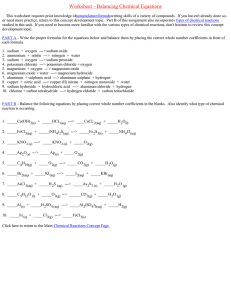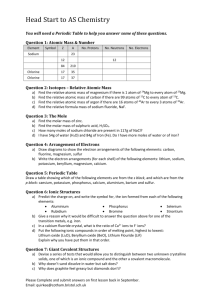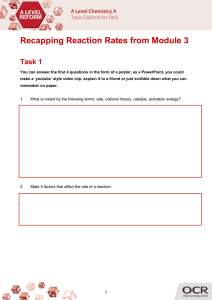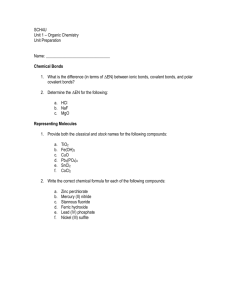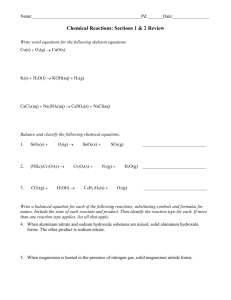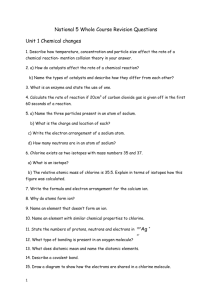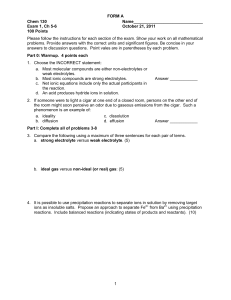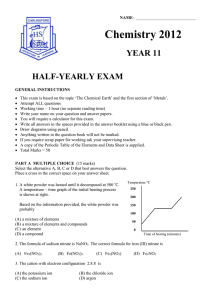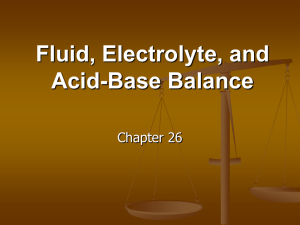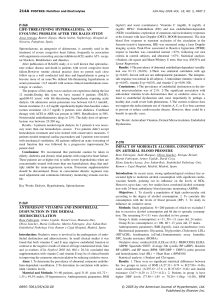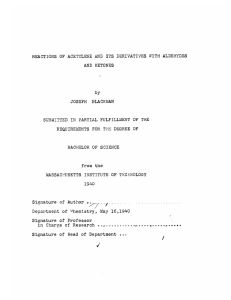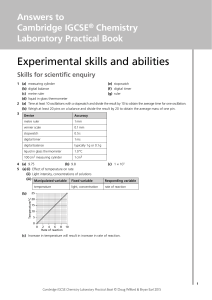Kinetics and Electrochemistry_answers
advertisement
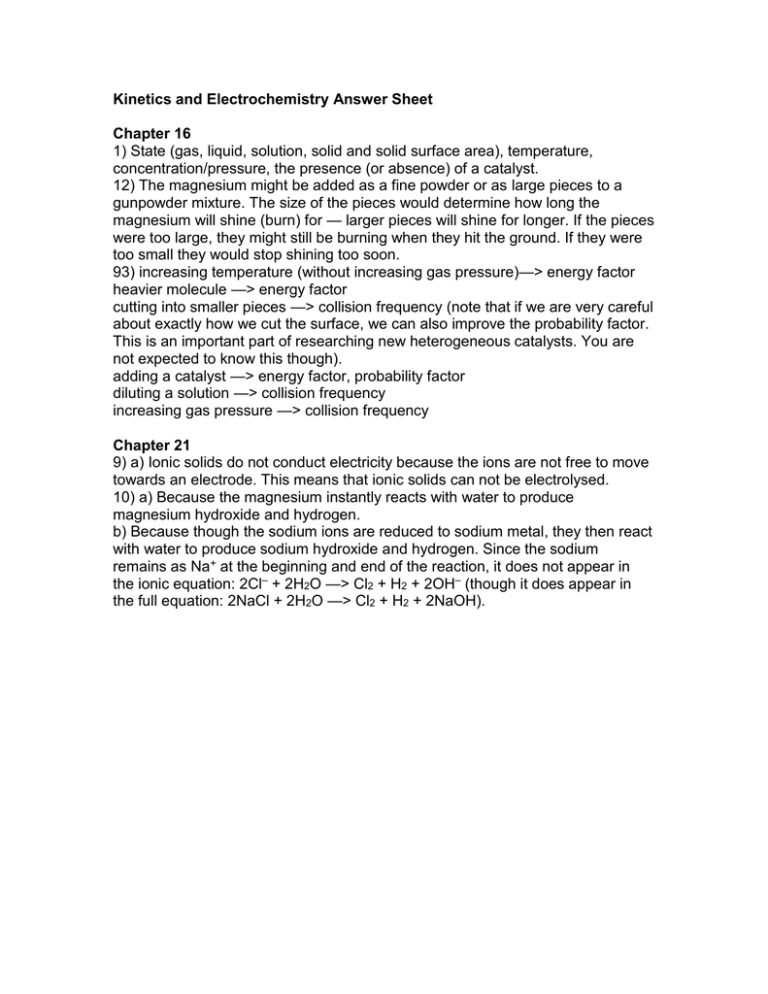
Kinetics and Electrochemistry Answer Sheet Chapter 16 1) State (gas, liquid, solution, solid and solid surface area), temperature, concentration/pressure, the presence (or absence) of a catalyst. 12) The magnesium might be added as a fine powder or as large pieces to a gunpowder mixture. The size of the pieces would determine how long the magnesium will shine (burn) for — larger pieces will shine for longer. If the pieces were too large, they might still be burning when they hit the ground. If they were too small they would stop shining too soon. 93) increasing temperature (without increasing gas pressure)—> energy factor heavier molecule —> energy factor cutting into smaller pieces —> collision frequency (note that if we are very careful about exactly how we cut the surface, we can also improve the probability factor. This is an important part of researching new heterogeneous catalysts. You are not expected to know this though). adding a catalyst —> energy factor, probability factor diluting a solution —> collision frequency increasing gas pressure —> collision frequency Chapter 21 9) a) Ionic solids do not conduct electricity because the ions are not free to move towards an electrode. This means that ionic solids can not be electrolysed. 10) a) Because the magnesium instantly reacts with water to produce magnesium hydroxide and hydrogen. b) Because though the sodium ions are reduced to sodium metal, they then react with water to produce sodium hydroxide and hydrogen. Since the sodium remains as Na+ at the beginning and end of the reaction, it does not appear in the ionic equation: 2Cl– + 2H2O —> Cl2 + H2 + 2OH– (though it does appear in the full equation: 2NaCl + 2H2O —> Cl2 + H2 + 2NaOH).


